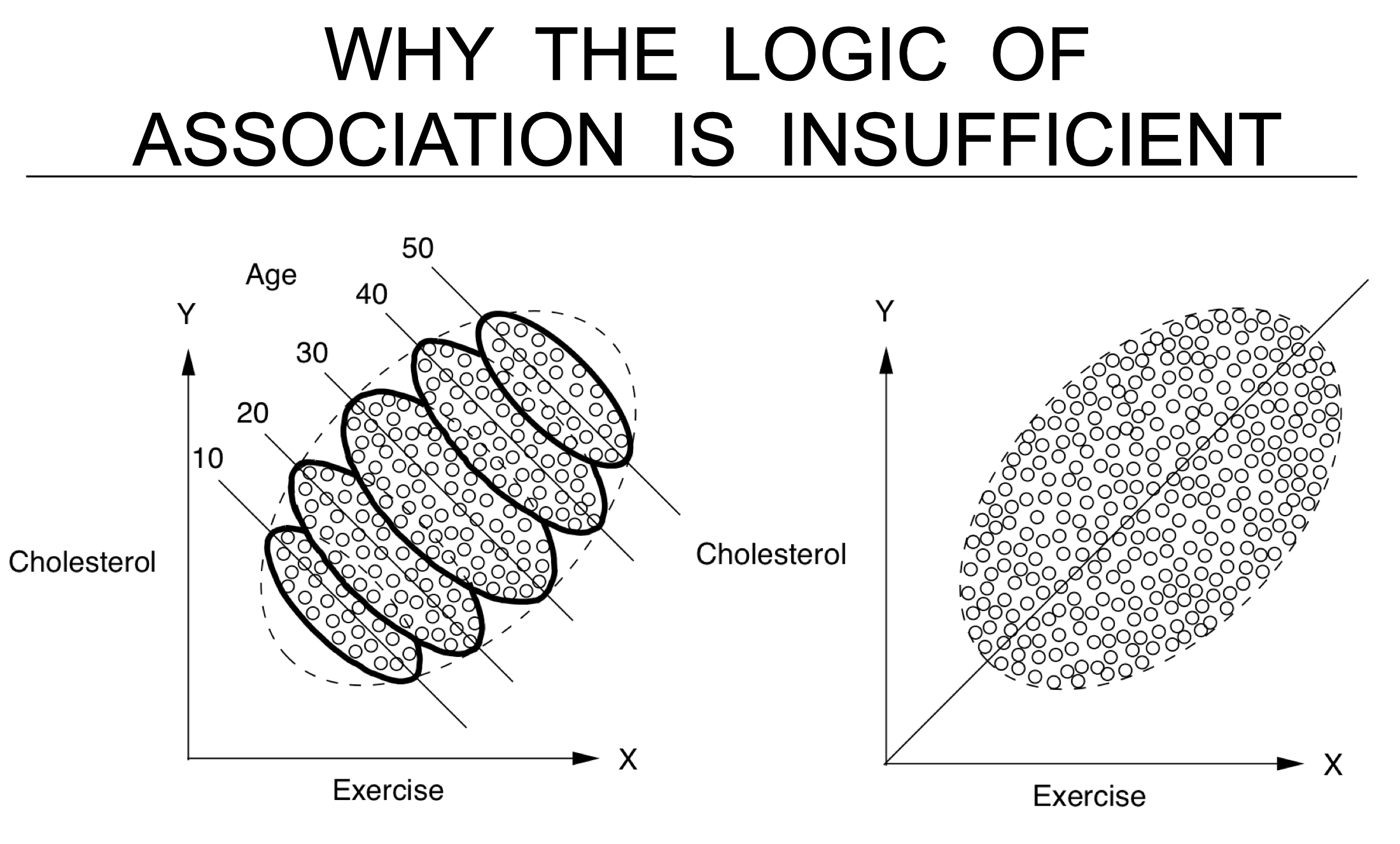causal inference
causality (freedman ch 1)
- When using observational (non-experimental) data to make causal inferences, the key problem is confounding
- stratification = cross-tabulation - only look at when confounding variables have same value
- association is circumstantial evidence for causation
- examples
- HIP trial of mammography - want to do whole treatment group v. whole control group
- Snow on cholera - water
- causes of poverty - Yul’s model, changes with lots of things
- problem: never get to see gt
basic causal inference
- confounding - difference between groups other than the treatment which affects the response
- 3 frameworks
- neyman-rubin model: $Y_i = T_i a_i + (1-T_i) b_i$
- $\hat{ate} = \hat{a}_A - \hat{b}_B$
- $\hat{ate}_{adj} = [\bar{a}_A - (\bar{x}_A - \bar{x})^T \hat{\theta}_A] - [\bar{b}_B - (\bar{x}_B - \bar{x})^T \hat{\theta}_B]$
- $\hat{\theta}A = argmin \sum{i \in A} (a_i - \bar{a}_A - (x_i - \bar{x}_A)^T \theta)^2$
- neyman-pearson
- null + alternative hypothesis
- null is favored unless there is strong evidence to refute it
- fisherian testing framework
- small p-values evidence against null hypothesis
- null hypothesis
- neyman-rubin model: $Y_i = T_i a_i + (1-T_i) b_i$
- errors
- type I err: FP - reject when false
- type II err: FN
- power: TP = sensitivity
- TN
- newer
- sensitivity = power
- recall = sensitivity - true positive rate = TP / P
- precision = TP / (TP + FP)
- specificity = true neg rate = TN / N
- natural experiments
- ex. john snow
- propensity score - probability that a subject recieving a treatment is valid after conditioning on appropriate covariates
- 3 principles of experimental design
- replication
- randomization
- conditioning
causal inference papers
- 2 general approaches
- matching - find patients that are similar and differ only in the treatment
- only variables you don’t match on could be considered causal
- regression
- requires unconfoundedness = omitted variable bias
- if there are no confounders, correlation is causation
- matching - find patients that are similar and differ only in the treatment
- Hainmueller & Hangartner (2013) - Swiss passport
- naturalization decisions vary with immigrants’ attributes
- is there immigration against immigrants based on country of origin?
- citizenship requires voting by municipality
- Sekhon et al. - when natural experiments are neither natural nor experiments
- even when natural interventions are randomly as- signed, some of the treatment–control comparisons made available by natural experiments may not be valid
- Grossman et al. - “Descriptive Representation and Judicial Outcomes in Multiethnic Societies”
- judicial outcomes of arabs depended on whether there was an Arab judge on the panel
- liver transplant
- maximize benefit (life with - life without)
- currently just goes to person who would die quickest without
- Y = T Y(1) + (1-T) Y(0)
- Y(1) = survival with transplant
- Y(0) = survival w/out transplant
- fundamental problem of causal inference - can’t observe Y(1) and Y(0)
- T = 1 if receive transplant else 0
- goal: estimate $\tau = Y(1) - Y(0)$ for each person
causality ovw
